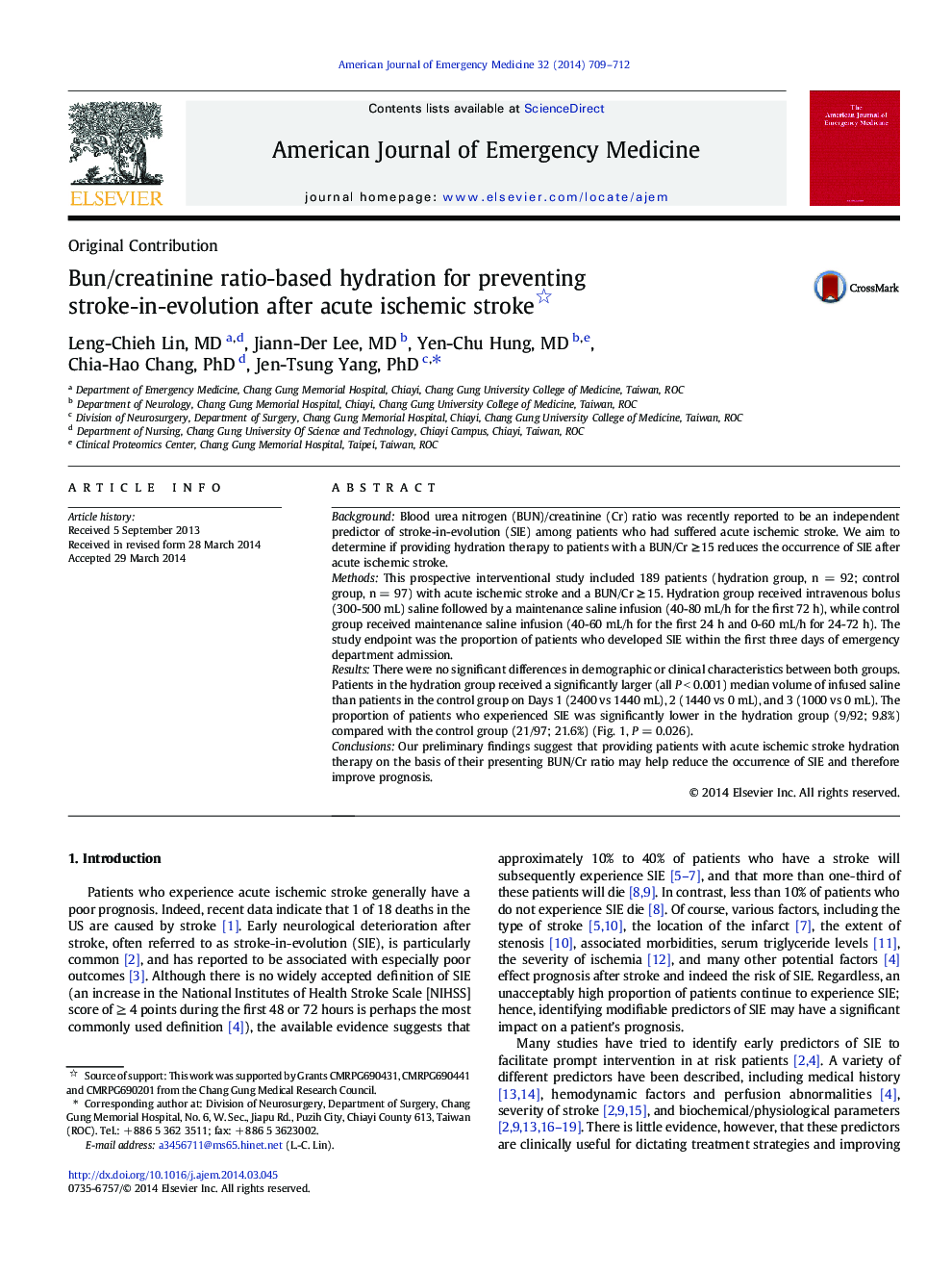| Article ID | Journal | Published Year | Pages | File Type |
|---|---|---|---|---|
| 3224285 | The American Journal of Emergency Medicine | 2014 | 4 Pages |
BackgroundBlood urea nitrogen (BUN)/creatinine (Cr) ratio was recently reported to be an independent predictor of stroke-in-evolution (SIE) among patients who had suffered acute ischemic stroke. We aim to determine if providing hydration therapy to patients with a BUN/Cr ≥ 15 reduces the occurrence of SIE after acute ischemic stroke.MethodsThis prospective interventional study included 189 patients (hydration group, n = 92; control group, n = 97) with acute ischemic stroke and a BUN/Cr ≥ 15. Hydration group received intravenous bolus (300-500 mL) saline followed by a maintenance saline infusion (40-80 mL/h for the first 72 h), while control group received maintenance saline infusion (40-60 mL/h for the first 24 h and 0-60 mL/h for 24-72 h). The study endpoint was the proportion of patients who developed SIE within the first three days of emergency department admission.ResultsThere were no significant differences in demographic or clinical characteristics between both groups. Patients in the hydration group received a significantly larger (all P < 0.001) median volume of infused saline than patients in the control group on Days 1 (2400 vs 1440 mL), 2 (1440 vs 0 mL), and 3 (1000 vs 0 mL). The proportion of patients who experienced SIE was significantly lower in the hydration group (9/92; 9.8%) compared with the control group (21/97; 21.6%) (Fig. 1, P = 0.026).ConclusionsOur preliminary findings suggest that providing patients with acute ischemic stroke hydration therapy on the basis of their presenting BUN/Cr ratio may help reduce the occurrence of SIE and therefore improve prognosis.
